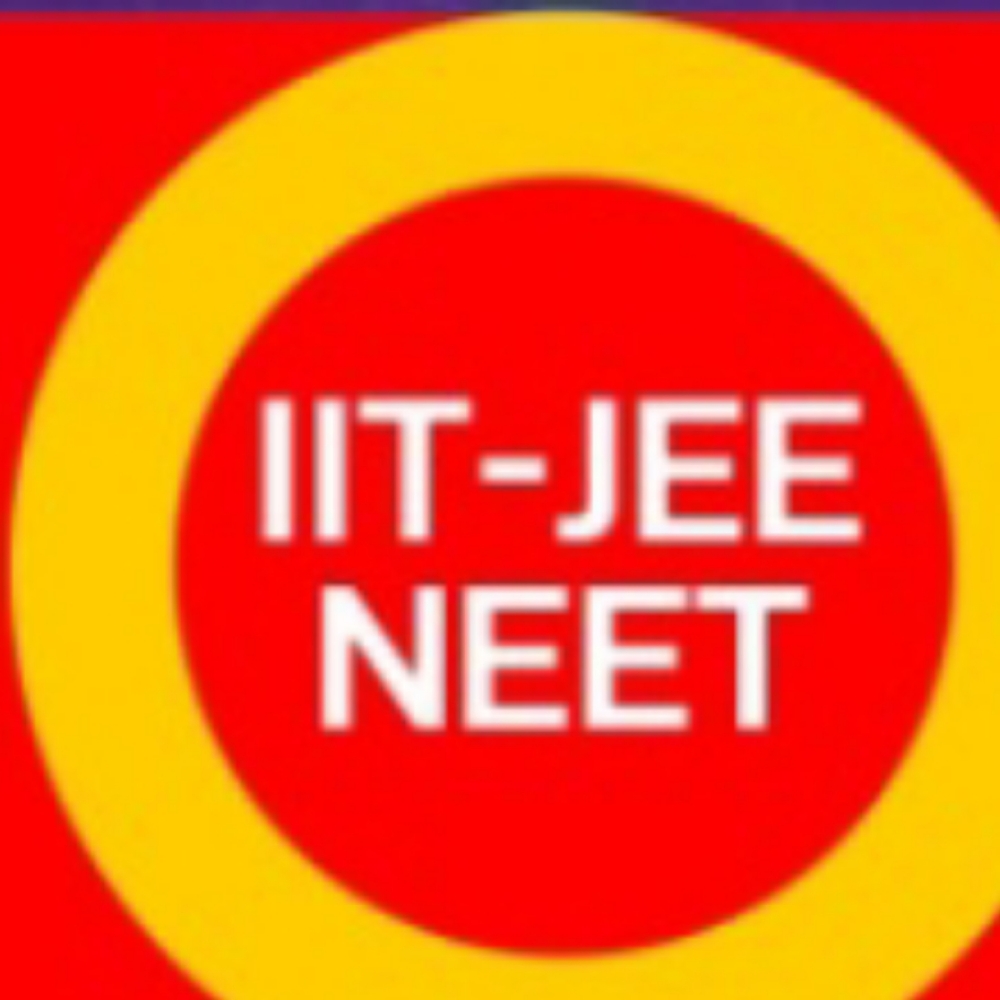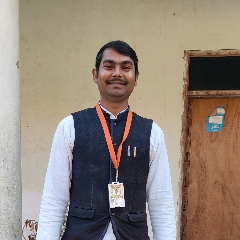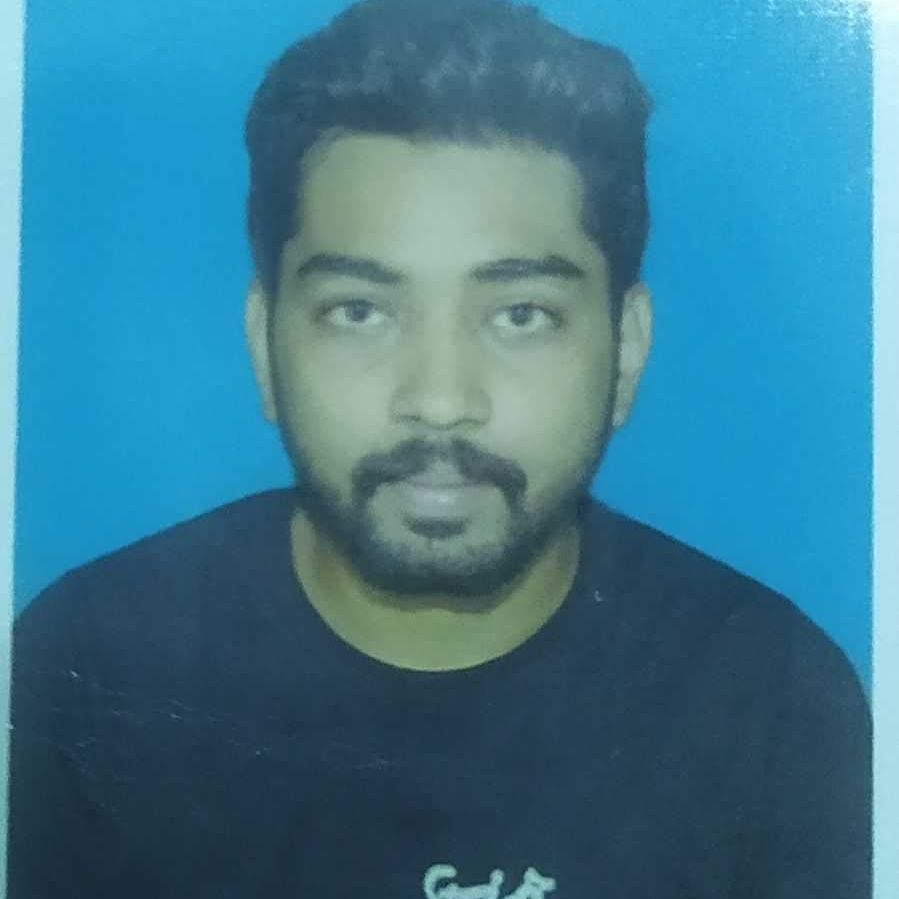Question 1 :
A thin converging lens of refractive index 1.5 has power of +5D. When this lens is immersed in a liquid, it acts as a diverging lens of focal length 100 cm. The refractive index of the liquid is
Question 2 :
A prism (<font face="Symbol">µ</font> = 1.5) has a refracting angle of 30<font face="Symbol">°</font>. The deviation of a monochromatic ray incident normally on its one surface will be (sin48<font face="Symbol">°</font>36′ = 0.75)
Question 3 :
A parallel narrow beam of light is incident on the surface of a transparent hemisphere of radius <em>R</em> and refractive index <font face="Symbol">µ</font> =1.5 as shown. The position of the image formed by refraction at the spherical surface only is <img style='object-fit:contain' style="max-width:240px;" src="https://storage.googleapis.com/teachmint/question_assets/JEE%20Main/5f16c849bfef6349df010032"/>
Question 4 :
The refractive index of diamond is $\dfrac {5}{2}$. The refractive index of glass is $\dfrac {3}{2}$. The refractive index of glass w.r.t to diamond is:
Question 5 :
Obtain an expression for refractive index of a medium with respect to another in terms of speed of light in these two media.<br/>
Question 6 :
A thin convergent glass lens (<font face="Symbol">µ</font><sub>g</sub> = 1.5) has a power of +5.0 <em>D</em>. when this lens is immersed in a liquid of refractive index <font face="Symbol">µ</font><em><sub>l</sub></em>, it acts as a divergent lens of focal length 100 cm. The value of <font face="Symbol">µ</font><em><sub>l</sub></em> is
Question 7 :
An object {tex} O {/tex} is placed in front of a small plane mirror {tex} M _ { 1 } {/tex} and a large convex mirror {tex} M _ { 2 } {/tex} of focal length {tex} f {/tex}. The distance between {tex} O {/tex} and {tex} M _ { 1 } {/tex} is {tex} x , {/tex} and the distance between {tex} M _ { 1 } {/tex} and {tex} M _ { 2 } {/tex} is {tex} y . {/tex} The images of {tex} O {/tex} formed by {tex} M _ { 1 } {/tex} and {tex} M _ { 2 } {/tex} coincide. The magnitude of {tex} f {/tex} is<br><img style='object-fit:contain' src="https://storage.googleapis.com/teachmint/question_assets/JEE%20Main/5d5bb3465637834a588987bd"><br>
Question 8 :
A point source of light <em>B</em> is placed at a distance <em>L</em> in front of the centre of a mirror of width <em>d</em> hung vertically on a wall. A man walks in front of the mirror at a distance 2<em>L</em> from its as shown. The greatest distance over which he can see the image of the light source in the mirror is <br> <img style='object-fit:contain' style="max-width:240px;" src="https://storage.googleapis.com/teachmint/question_assets/JEE%20Main/5f16c84df1a5a149feab9c21"/>
Question 9 :
A beam with wavelength {tex} \lambda {/tex} falls on a stack of partially reflecting planes with separation {tex} d {/tex}. The angle {tex} \theta {/tex} that the beam should make with the planes so that the beams reflected from successive planes may interfere constructively is (where {tex} n = 1,2 , \ldots . ) {/tex}<br><img style='object-fit:contain' src="https://storage.googleapis.com/teachmint/question_assets/JEE%20Main/5dc3ac85e18860128132dcab"><br>
Question 10 :
A prism {tex} ( \mu = 1.5 ) {/tex} has a refracting angle of {tex} 30 ^ { \circ } . {/tex} The deviation of a monochromatic ray incident normally on its one surface will be {tex} \left( \sin 48 ^ { \circ } 36 ^ { \prime } = 0.75 \right) {/tex}
Question 11 :
An object of length 1 cm is placed on the principle axis of an equiconvex lens of radius 5 cm. Distance between the lens and object is 20 cm. Space between the lens and object is filled with medium of two different refractive indices 2 and 1 as shown in the figure. Refractive index is 1 on the left of the object and on the right side of the lens. Boundary of both medium is mid-way between the object and lens. <img style='object-fit:contain' style="max-width:240px;" src="https://storage.googleapis.com/teachmint/question_assets/JEE%20Main/5f16c865bfef6349df010059"/>
Question 12 :
The <em>x</em>-<em>z</em> plane separates two media <em>A</em> and <em>B</em> of refractive indices <font face="Symbol">µ</font><sub>1</sub> = 1.5 and <font face="Symbol">µ</font><sub>2</sub> =2. A ray of light travels from <em>A</em> to <em>B</em>. Its directions in the two media are given by unit vectors <em>u⃗</em><sub>1</sub> = <em>a</em><em>î</em> + <em>b</em><em>ĵ</em> and <em>u⃗</em><sub>2</sub> = <em>c</em><em>î</em> + <em>d</em><em>ĵ</em>. Then
Question 13 :
A plastic hemisphere has a radius of curvature of 8 cm and an index of refraction of 1.6. On the axis half way between the plane surface and the spherical one (4 cm from each) is a small object <em>O</em>. The distance between the two images when viewed along the axis from the two sides of the hemisphere is approximately. <img style='object-fit:contain' style="max-width:240px;" src="https://storage.googleapis.com/teachmint/question_assets/JEE%20Main/5f16c853bfef6349df010042"/>
Question 14 :
A liquid of refractive index {tex} 1.33{/tex} is placed between two identical plano-convex lenses, with refractive index {tex} 1.50 . {/tex} Two possible arrangements, {tex} P {/tex} and {tex} Q , {/tex} are shown. The system is<br><img style='object-fit:contain' src="https://storage.googleapis.com/teachmint/question_assets/JEE%20Main/5d5bb21a5637834a588986b9"><br>
Question 15 :
A ray of light from a liquid {tex} ( \mu = \sqrt { 3 } ) {/tex} is incident on a system of two right-angled prisms of refractive indices {tex} \sqrt { 3 } {/tex} and {tex} \sqrt { 2 } {/tex} as shown. The ray suffers zero deviation when emerges into air from {tex} C D . {/tex} The angle of incidence {tex} i {/tex} is<br><img style='object-fit:contain' src="https://storage.googleapis.com/teachmint/question_assets/JEE%20Main/5d5bb3005637834a58898786"><br>
Question 16 :
In the given situation what is the angle of deviation? <br> <img style='object-fit:contain' style="max-width:240px;" src="https://storage.googleapis.com/teachmint/question_assets/JEE%20Main/5f16c852f1a5a149feab9c2a"/>
Question 17 :
A plano-convex lens has a thickness of {tex} 4 \mathrm { cm } . {/tex} When placed on a horizontal table with curved surface in contact with it, the apparent depth of the bottom-most point of the lens is found to be {tex} 3 \mathrm { cm } . {/tex} If the lens is inverted such that the plane face is in contact with the table, the apparent depth of the centre of plane face is found to be {tex} 25 / 8 \mathrm { cm } . {/tex} The focal length of the lens is
Question 18 :
Assertion: Light of different colors travel with different speeds in vacuum.
Reason: Speed of light depends on medium.
Question 19 :
A thin rod of length {tex} f / 3 {/tex} is placed along the optic axis of a concave mirror of focal length {tex} f {/tex} such that its image, which is real and elongated, just touches the rod. The magnification is
Question 20 :
When a biconvex lens of glass having refractive index 1.47 is dipped in a liquid , it acts as a plane sheet of glass. This implies that the liquid must have refractive index:
Question 21 :
A concave lens of focal length 10{tex} \mathrm { cm } {/tex} and a convex lens of focal length 20{tex} \mathrm { cm } {/tex} are placed certain distance apart. If parallel rays incident on one lens become converging after passing through other lens, then the separation between the lenses must be greater than.
Question 22 :
In the given situation, for what value of <em>i,</em> the incidence ray will retrace its initial path <img style='object-fit:contain' style="max-width:240px;" src="https://storage.googleapis.com/teachmint/question_assets/JEE%20Main/5f16c851bfef6349df01003e"/>
Question 23 :
The plane face of plano-convex lens of focal length 20 {tex} \mathrm { cm } {/tex} is silvered. This combination is equivalent to the type of mirror and its focal length is
Question 24 :
The plane face of plano-convex lens of focal length 20 cm is silvered. This combination is equivalent to the type of mirror and its focal length is
Question 25 :
For the same angle of incidence, the angles of refractive in media '$P$', '$Q$', '$R$' and '$S$' are ${ 50 }^{ o },{ 40 }^{ o },{ 30 }^{ o },{ 20 }^{ o }$ respectively. The speed of light is minimum in medium
Question 26 :
The distance between an object and the screen is 100 cm. A lens produces an image on the screen when placed at either of the positions 40 cm apart. The power of the lens is nearly
Question 27 :
In the visible region of the spectrum the rotation of the place of polarization is given by {tex} \theta = a + \frac { b } { \lambda ^ { 2 } } . {/tex} The optical rotation produced by a particular material is found to be {tex} 30 ^ { \circ } {/tex} per {tex} m m {/tex} at {tex} \lambda = 5000 \mathrm { A } {/tex} and {tex} 50 ^ { \circ } {/tex} per {tex} \mathrm { mm } {/tex} at {tex} \lambda = 4000 \mathrm { A } {/tex}. The value of constant a will be
Question 28 :
Light wave enters from medium 1 to medium 2. Its velocity in 2<sup>nd</sup> medium is double from 1<sup>st</sup>. For total internal reflection the angle of incidence must be greater than
Question 29 :
The refractive indices of water, glass and diamond are 1.33, 1.50 and 2.40 respectively. The refractive index of diamond relative to water and of glass relative to diamond respectively are nearly:
Question 30 :
A thin lens of refractive index {tex}1.5{/tex} has a focal length of {tex}15 \mathrm { cm } {/tex} in air. When lens is placed in a medium of refractive index {tex} ( 4 / 3 ) , {/tex} focal length will be now
Question 31 :
A ray of light falls on the surface of a spherical glass paperweight making an angle {tex} \alpha {/tex} with the normal and is refracted in the medium at an angle {tex} \beta . {/tex} The angle of deviation of the emergent ray from the direction of the incident ray is<br>
Question 32 :
{tex}\mathbf {Assertion}{/tex} : The earth without atmosphere would be inhospitably cold.<br>{tex}\mathbf {Reason}{/tex} : All heat would escape in the absence of atmosphere.<br>
Question 33 :
A light ray falls on a square slab at an angle {tex} 45 ^ { \circ } . {/tex} What must be the minimum index of refraction of glass, if total internal reflection takes place at the vertical face?<br><img style='object-fit:contain' src="https://storage.googleapis.com/teachmint/question_assets/JEE%20Main/5d5bb2485637834a588986e3"><br>
Question 34 :
The light ray is incidence at angle of 60<font face="Symbol">°</font> on a prism of angle 45<font face="Symbol">°</font>. When the light ray falls on the other surface at 90<font face="Symbol">°</font>, the refractive index of the material of prism <font face="Symbol">µ</font> and the angle of deviation δ are given by
Question 35 :
A point object is moving along the principle axis of a concave mirror at rest of focal length 30cm with speed 5m/s towards the mirror. Find the speed of image of object when object is at a distance 60cm from mirror. <br> <img style='object-fit:contain' style="max-width:240px;" src="https://storage.googleapis.com/teachmint/question_assets/JEE%20Main/5f16c851bfef6349df01003d"/>
Question 36 :
A ray of light from a liquid {tex}\left( \mu = \sqrt{3} \right){/tex} is incident on a system of two right angled prism of refractive indices {tex}\sqrt{3}{/tex} and {tex}\sqrt{2}{/tex} as shown. The ray suffers zero deviation when emerges into air from <em>CD</em>. The angle of incidence <em>i</em> is <img style='object-fit:contain' style="max-width:240px;" src="https://storage.googleapis.com/teachmint/question_assets/JEE%20Main/5f16c842f1a5a149feab9c19"/>
Question 37 :
A plane glass plate is kept on a paper on which letters are printed in various colours; colour of the letters which will be more close to upper surface is
Question 38 :
An observer can see through a pinhole the top end of a thin rod of height {tex} h {/tex}, placed as shown in the Fig. The beaker height is 3{tex} h {/tex} and its radius {tex} h {/tex}. When the beaker is filled with a liquid up to a height 2{tex} h {/tex}, he can see the lower end of the rod. Then the refractive index of the liquid is<br><img style='object-fit:contain' src="https://s3.ap-south-1.amazonaws.com/me-p/5eedefb597c31b19a3d282d0.jpg" />
Question 39 :
The light ray is incident at angle of 60<font face="Symbol">°</font> on a prism of angle 45<font face="Symbol">°</font>. When the light ray falls on the other surface at 90<font face="Symbol">°</font>, the refractive index of the material of prism <font face="Symbol">µ</font> and the angle of deviation δ are given by
Question 40 :
Focal length of an equiconvex lens is {tex} 20 \mathrm { cm } . {/tex} If we cut it once perpendicular to principle axis, and then along principal axis, then focal length of each part will be
Question 41 :
In a converging lens of focal length {tex} f {/tex} and the distance between real object and its real image is {tex} 4 f . {/tex} If the object moves {tex} x _ { 1 } {/tex} distance towards lens, its image moves {tex} x _ { 2 } {/tex} distance away from the lens and when object moves {tex} y _ { 1 } {/tex} distance away from the lens its image moves {tex} y _ { 2 } {/tex} distance towards the lens, then choose the correct option<br><img style='object-fit:contain' src="https://storage.googleapis.com/teachmint/question_assets/JEE%20Main/5d5bb2d85637834a58898764"><br>
Question 42 :
A glass prism of refractive index 1.5 is immersed in water (<font face="Symbol">µ</font> = 4/3). A light beam incident normally on the face <em>AB</em> is totally reflected to reach the face <em>BC</em>, if <img style='object-fit:contain' style="max-width:240px;" src="https://storage.googleapis.com/teachmint/question_assets/JEE%20Main/5f16c81b4bec8070e4e15297"/>
Question 43 :
An object of mass {tex} m {/tex} is moving with velocity {tex} \vec { u } {/tex} towards a plane mirror kept on a stand as shown in the Fig. <br><img style='object-fit:contain' src='https://storage.googleapis.com/teachmint/question_assets/JEE%20Main/5e8acbf3131a2b237d875cca' class="uploaded-image" /> <br>The mass of the mirror and stand system is {tex} m {/tex}. A head-on elastic collision takes place between the object and the mirror stand, the velocity of image before and after the collision is
Question 44 :
A point source of electromagnetic radiation has an average power output of {tex} 800 \mathrm { W } {/tex}. The maximum value of electric field at a distance {tex} 4.0 \mathrm { m } {/tex} from the source is
Question 45 :
For a concave mirror of focal length 20 cm, if the object is at a distance of 30 cm from the pole, then the nature of the image and its magnification will be
Question 46 :
The light ray is incident at angle of {tex} 60 ^ { \circ } {/tex} on a prism of angle {tex} 45 ^ { \circ } . {/tex} When the light ray falls on the other surface at {tex} 90 ^ { \circ } , {/tex} the refractive index of the material of prism {tex} \mu {/tex} and the angle of deviation {tex} \delta {/tex} are given by
Question 47 :
A cylinder is filled with a liquid of refractive index <font face="Symbol">µ</font>. The radius of the cylinder is decreasing at a constant rate <em>K</em>. The volume of the liquid inside the container remains constant at <em>V</em>. The observer and the object <em>O</em> are in a state of rest and at a distance <em>L</em> from each other. The apparent velocity of the object as seen by the observer, (when radius of cylinder is <em>r</em>) <img style='object-fit:contain' style="max-width:240px;" src="https://storage.googleapis.com/teachmint/question_assets/JEE%20Main/5f16c865bfef6349df01005a"/>
Question 48 :
A star emitting light of wavelength {tex} 5896 \mathrm { A } ^{\circ}{/tex} is moving away from the earth with a speed of {tex} 3600 \mathrm { km } / \mathrm { sec } . {/tex} The wavelength of light observed on earth will<br>{tex} \left( c = 3 \times 10 ^ { 8 } \mathrm { m } / \mathrm { sec } \text { is the speed of light } \right) {/tex}<br>
Question 49 :
Light travels through a glass plate of thickness {tex} t {/tex} and having refractive index {tex} \mu {/tex}. If {tex} c {/tex} be the velocity of light in vacuum, the time taken by the light to travel this thickness of glass is
Question 50 :
A plane mirror is placed at the bottom of a tank containing a liquid of refractive index <font face="Symbol">µ</font>, <em>P</em> is a small object at a height <em>h</em> above the plane mirror. An observer <em>O</em>, vertically above <em>P</em>, outside the liquid, observer <em>P</em> and its image in the mirror. The apparent distance between object and its image will be <img style='object-fit:contain' style="max-width:240px;" src="https://storage.googleapis.com/teachmint/question_assets/JEE%20Main/5f16c84fbfef6349df01003b"/>


























